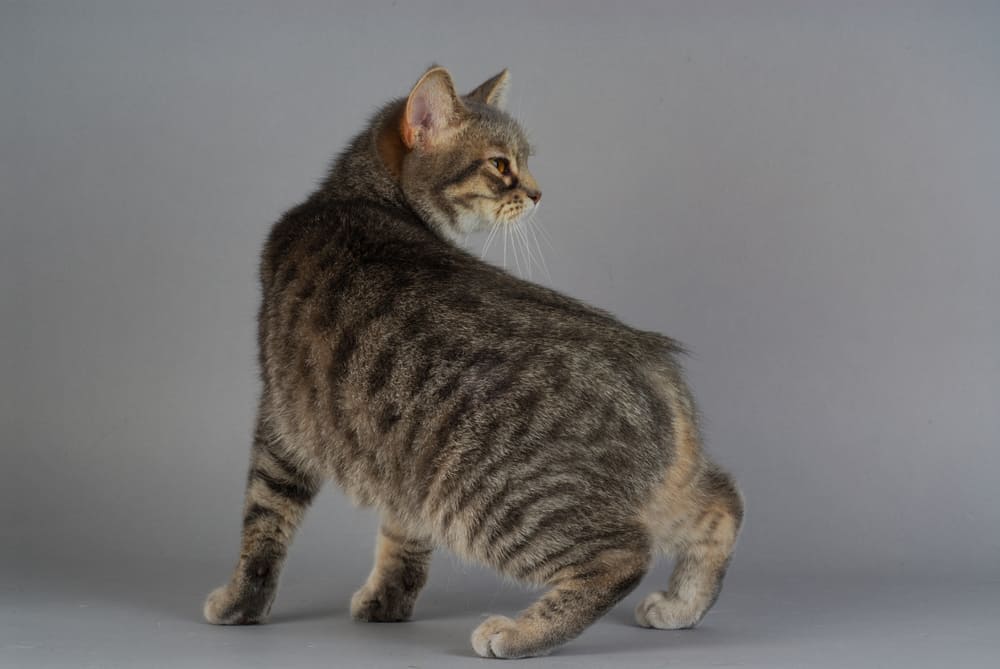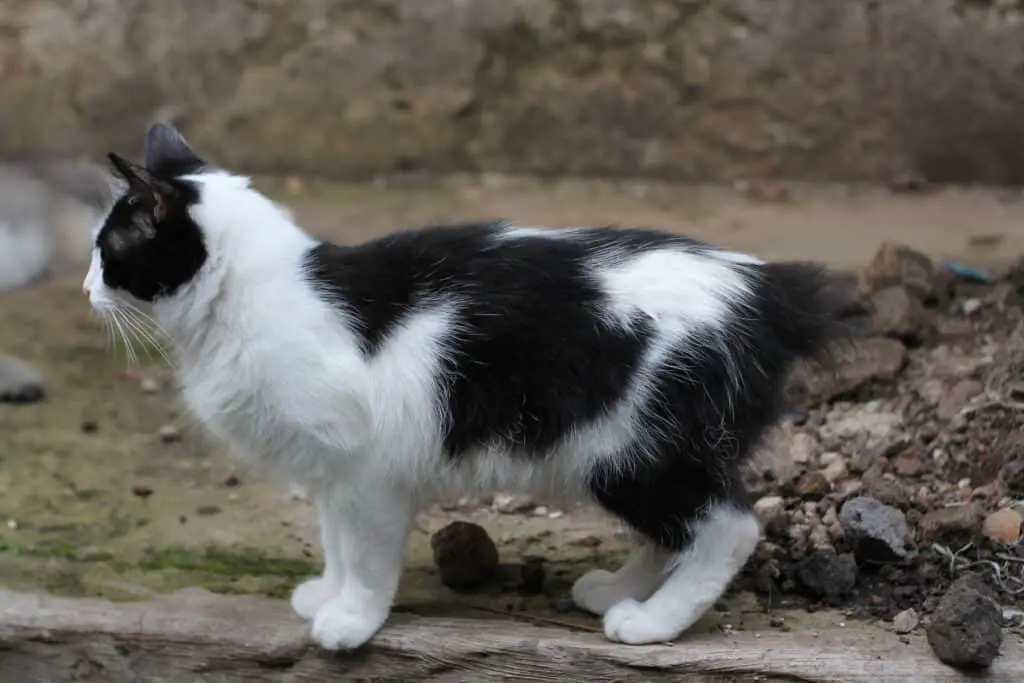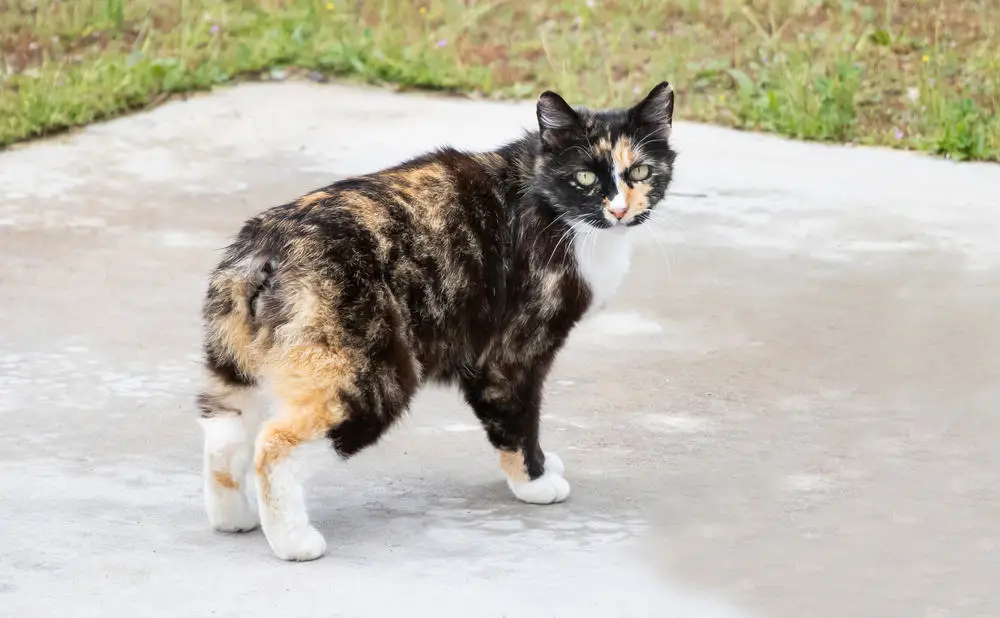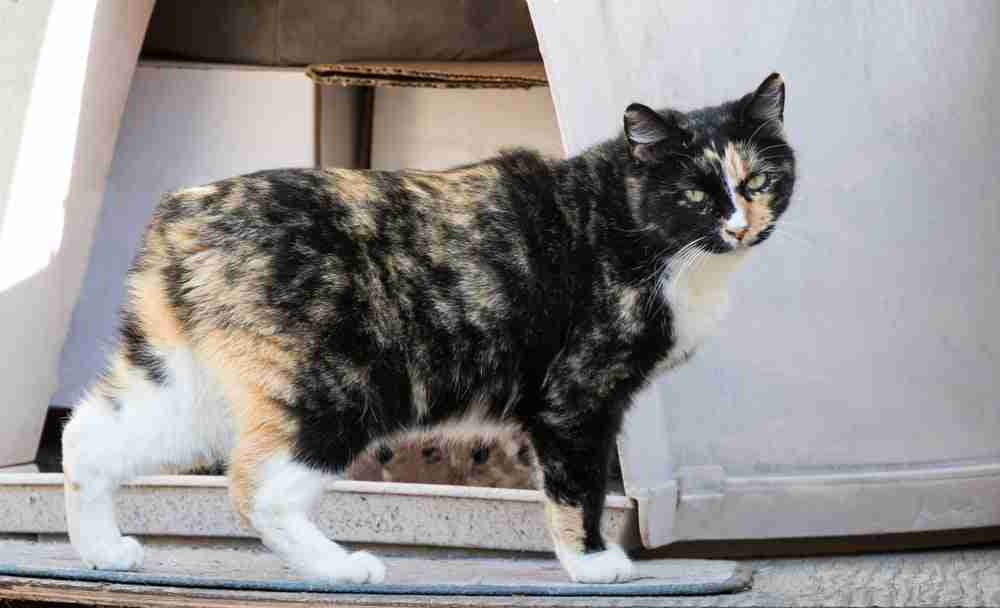If you’re a cat lover, but that big, bushy tail of a feline bothers you a bit — we have news for you. Simply have a look at the Manx cat breed – a unique, sophisticated, and well-mannered cat breed with small to nearly non-existent tails.
The bobtail or super-small tail of Manx cats is a result of a natural genetic mutation that has taken place for centuries.
First found in the Isle of Man — an island in Britain, Manx cat has ever since been a popular pet for farmers, sailors, and all other cat lovers.
They’re well-known for their sweet and gentle posture and also for their excellent hunting abilities. These felines come in a variety of colors, and each one is different from another!
An Overview of the Manx Cat Breed
| Height | 7-11 Inches |
| Weight | 8-13 Pounds |
| Intelligence | High |
| Temperament | Very affectionate |
| Life-Span | 9-14 years |
| Shedding Amount | Not much |
| Playfulness | Medium |
| Patterns | Solid, bi-color, calico tri-color, tabby, color point |
| Colors | White, Red/Orange, Gray/Blue, Black/Ebony, Chocolate/Brown, Tortoiseshell, Cream/Beige |
| Coat Length | Short |
| Comfortable With | Other cats, children |

Characteristics
Not all the Manx cats have short tails, some of them actually have regular-sized tails, and they’re known as ‘longies’. The ones with short tails are called ‘stumpies’ whereas Manx cats without any tail are known as ‘rumpy’.
There’s another type of Manx cat with a little, tiny bone and the end of its spine and is called a ‘riser’. Expectedly, two of the most popular Manx types are ‘rumpy’ and ‘riser’, since people love them, especially for their lack of tails. Longies and Stumpies are generally used for breeding programs.
Apart from the tail, Manx cats have other distinguishable characteristics too. They’re blessed with a beautiful round head and contrasting large round eyes.
Moreover, these cats have a muscular and strong body with a short back and broad chest. Manx cats have pretty long hind legs, short front legs, and a round rear end. They’re quite stout and powerful because of their stocky physical structure and muscular thighs. Their relatively longer rear legs have similarities with rabbits.
Manx can come in a couple of different coat lengths. They either have a longhaired double coat or a short double coat. In many cat societies, a Manx with a longhaired coat is known as Cymric, but in general, they’re considered the same breed as Manx.
How Did Manx Cats Originate
It’s difficult to track back to the time when the Manx cat breed first existed, but we can be sure of one thing — their natural short-tail mutation started off in the Isle of Man.
Legends say that Spanish or Nordic sailors carried a cat with a short tail on the island, and thus the Manx cat breed was introduced. The island was relatively small and quite isolated from the world, so it didn’t take the short tail mutation a long time to become a dominant trait among all the cats on the island.
But the sole reason behind Manx cats having short tails still remains an unsolved mystery. Scientists are still exploring probable causes behind this, but as of now, they haven’t figured out the genetic mechanism of this specific breed.
While they did manage to find a taillessness gene among Manx cats, it only decided if the Manx will have tails or not. As for the felines with different sized tails, the research still hasn’t bought anything concrete.
Interestingly enough, Manx isn’t the only breed with short tails, and it goes without saying that not all non-tailed cats fall into the Manx breed. There are different bobtail breeds like the Japanese bobtail that went through a similar genetic mutation in a geographically isolated area.
The first Manx cat was recorded way back in 1807, and ever since that they’ve become one of the most popular cat breeds in the world.
It’s safe to say that they’ve existed on this planet for nearly three centuries — maybe even more! The CFA or Cat Fancier’s Association enlisted Manx as one of their founding breeds back when they started their journey in 1904.

Personality
If you want a fluffy, chubby, and lazy kitty in the house, then Manx isn’t really the one for you.
These are natural hunters, and even after living in human households for so long, they haven’t forgotten their hunting skills. Truth be told, having a Manx cat at the house is like keeping a watchdog — only in this case, it’s a cat instead of a dog.
Manx cats are highly alert all the time and have excellent reflexes. They react very rapidly and will attack anything that it finds unsafe for their surroundings.
These cats are always ready to protect the people around them and the household they’re in. They’re quite intelligent too, so if they notice you don’t find something a threat — they won’t naturally attack it.
These felines will attack stray dogs, cats, mice, and insects in the house, thereby keeping it clean from most kinds of pest-based infestations. But don’t take them as rowdy and angry cats — they can be very sweet when they feel safe. They’re mellow-tempered and highly affectionate cats that love to be around people.
Manx is a playful and happy kitty that will follow you wherever you go and most probably sleep with you whenever you’re lying down to relax a bit.
Manx isn’t the loudest of cats, they love to curl up in their preferred sleeping spot and relax whenever they can. Their voice is a quiet trill, but will definitely ask for your food and adoration whenever they feel it.
They’re quite adaptable felines and will suit well with families with other pets and children. As kittens, Manx loves to explore areas in the household and to meet new people. They love their household members a lot, but wouldn’t mind some cheek rub or other forms of adoration for strangers too.
Manx cats are quite smart and intelligent in nature. They’re experts in the usual cat games like fetch and leash walking. Unlike many other cats, Manx absolutely loves to travel and ride in cars.
These cats also love to play in the water- so don’t be surprised if your pet Manx takes a dive in artificial fountains looking for live fish!
Moreover, these felines are easily trainable, so they can actually open a door if you train them right. They’re relatively gentle with their owners and will accept boundaries if you train them well. Manx cats love rewards, so just treat them with something if they do something good, and that should be enough!
These are people-oriented cats that require both time and attention, so if you can’t give it- you should rethink taking a Manx as a pet.

Size
Manx can come in various different sizes and colors. The adult Manx usually weighs up to 8-13 pounds, maybe a bit more in certain cases.
They don’t mature rapidly, so you can expect your Manx kitten to grow up to be a full adult in five years. Manx cats usually have a 7-11 inch height when their growth is complete. Do keep in mind that even though they look like medium-sized cats, they actually feel very heavy if you lift them.
Colors
Manx are blessed with double-coated thick fur, enabling them to withstand water and cold weather. You can find them in almost all the patterns and colors, but the most common colors and patterns include tortoiseshell, tabby, calicos, and orange.
If you’re lucky, you might even get color-pointed or all-white coats on a Manx. However, if you see a cat with lavender or chocolate-colored coat with different patterns — it’s probably not a Manx.

Health Issues
The Manx cat breed is a very healthy one in general and isn’t prone to any kind of major health problems genetically. That being said, these cats are short, round, and stout, so they don’t really have a long spine — rather a short one without proper muscle endings.
This is a reason why Manx cats can have issues like ‘Spina Bifida’ where they’re born with an exposed spinal cord. This problem is also known as Manx syndrome, where the birth defects directly affect their digestion, bowels, and urinary tract regions. Some Manx kittens with partial tails may have Arthritis in their tailbones.
However, these are all birth-related issues, and if you get a healthy 3-4-month-old kitten, the chances of these happening are low.
How Much Do manx Cats Cost?
Manx cats can be found at a lot of different prices depending on their coat color and pattern. For example, ebony-white Manx are very rare to find, so they’ll be way more expensive than the average Tabby or Tortoiseshell Manx kitten.
To give you an idea, Manx kittens can cost anywhere between $400 to $800. However, you may be able to find them at a cheaper cost based on where you’re living and how available Manx are there.
In general, high-quality Manx kitten without tails or with a short tail costs more than those with relatively normal tails. That being said, a top-quality Manx from renowned farms won’t cost you more than $1500.
Final Words
A Manx cat won’t just be a pet for your family, it will be a part of your everyday life… and maybe more. If you do have the ability to provide affection and spend time with them on a daily basis — only then you should bring home a Manx. We hope you found this article helpful!
